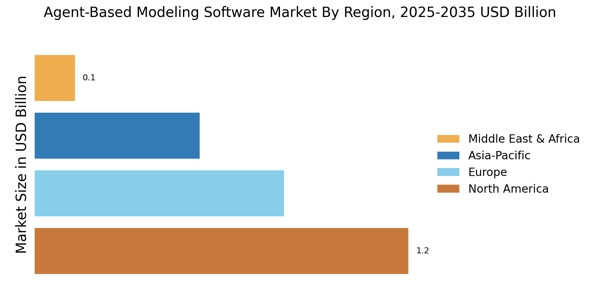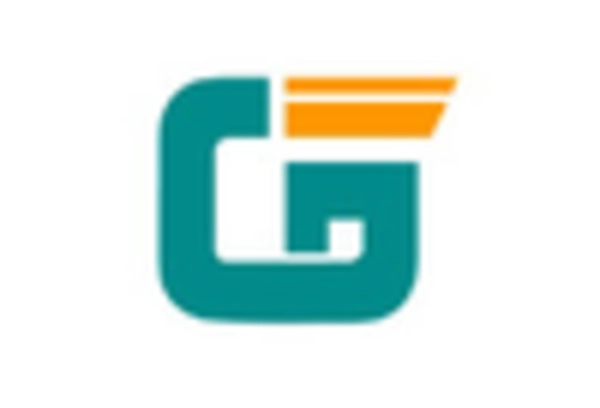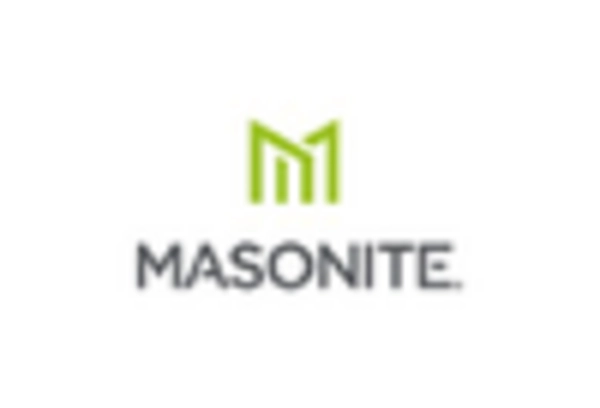Growing Adoption in Policy Making
The Agent-Based Modeling Software Market is witnessing a growing adoption of agent-based models in policy-making processes. Governments and organizations are increasingly utilizing these models to simulate the potential impacts of policy decisions before implementation. This approach allows for a more nuanced understanding of how different agents within a system may respond to various interventions. As a result, policymakers can make more informed decisions that consider the potential consequences of their actions. The trend is particularly prominent in areas such as public health, urban development, and environmental regulation, where agent-based modeling provides valuable insights into complex interactions. This shift is likely to drive further investment in agent-based modeling software as a critical tool for effective governance.
Emergence of Open Source Solutions
The Agent-Based Modeling Software Market is experiencing a notable emergence of open-source solutions, which is reshaping the competitive landscape. Open-source software offers researchers and organizations the flexibility to customize and adapt modeling tools to their specific needs without incurring significant costs. This trend is particularly appealing to academic institutions and startups that may have limited budgets. The availability of open-source agent-based modeling platforms fosters innovation and collaboration within the research community, as users can share their findings and improvements. As more organizations recognize the benefits of open-source solutions, the market is likely to see an increase in user engagement and a diversification of applications across various sectors.
Rising Demand for Simulation Tools
The Agent-Based Modeling Software Market is experiencing a notable increase in demand for simulation tools across various sectors. Organizations are increasingly recognizing the value of simulating complex systems to understand interactions and behaviors within those systems. This trend is particularly evident in industries such as healthcare, finance, and logistics, where decision-makers utilize agent-based models to predict outcomes and optimize processes. According to recent data, the market for simulation software is projected to grow at a compound annual growth rate of approximately 15% over the next five years. This growth is driven by the need for enhanced predictive capabilities and the ability to visualize potential scenarios, thereby enabling organizations to make informed decisions based on simulated data.
Advancements in Computational Power
The Agent-Based Modeling Software Market is significantly influenced by advancements in computational power. As hardware capabilities improve, the complexity and scale of agent-based models can expand, allowing for more detailed simulations. This enhancement enables researchers and organizations to model intricate systems with greater accuracy, leading to more reliable insights. The proliferation of cloud computing has also facilitated access to high-performance computing resources, making it feasible for smaller organizations to leverage sophisticated modeling tools. Consequently, the market is likely to witness an influx of new users who can utilize these advanced capabilities to address complex challenges in various fields, including urban planning and environmental studies.
Increased Focus on Interdisciplinary Research
The Agent-Based Modeling Software Market is benefiting from an increased focus on interdisciplinary research. As complex societal challenges arise, there is a growing recognition that solutions often require insights from multiple disciplines. Agent-based modeling serves as a bridge between fields such as economics, sociology, and environmental science, allowing researchers to collaborate effectively. This trend is reflected in the rising number of academic publications and research projects that employ agent-based models to explore multifaceted issues. The market is expected to expand as educational institutions and research organizations invest in training and resources to support interdisciplinary approaches, thereby enhancing the overall utility of agent-based modeling software.


















Leave a Comment